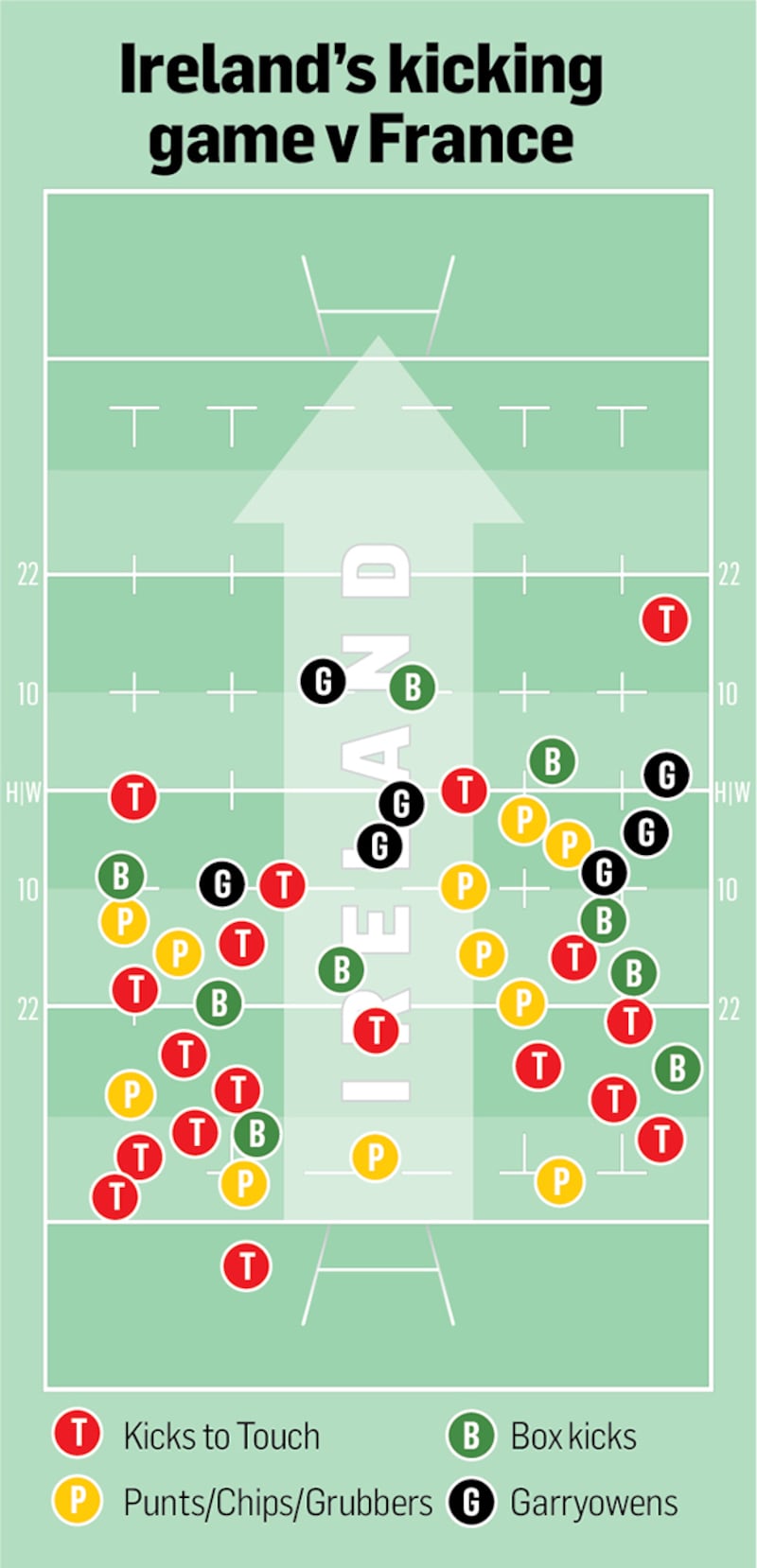Ireland's changeover from a team governed by detail under Joe Schmidt to a self-prescribed more freewheeling, heads up ethos under Andy Farrell is a journey with plenty of road left to negotiate in terms of the transition process judging by the opening couple of rounds in this season's Six Nations.
The current guidance system, to use a term to describe Ireland’s patterns in possession, is vulnerable to two primary types of error, pilot or defects in the original specification. The national team is currently dogged by both which is causing the Irish attack to splutter and malfunction.
Two tries in 160 minutes, one down to a superb piece of individual play by Robbie Henshaw against Wales and Ronan Kelleher's sharp finish following a fortuitous bounce in the French defeat, is hardly a ringing endorsement but identifying the root cause shines a light in several places.
Pressure pushes instinct and habits, good or bad, to the forefront of the decision making process. Opportunity can challenge the individual in a similar way, that if a player doesn’t look by inclination, he’ll never see or appreciate the chance that’s presented.

After 67 seconds of Sunday's game, Rhys Ruddock pinches a French lineout throw and the ball is filtered back to Billy Burns. The French centres, Gael Fickou and Arthur Vincent, are narrow and tight while Garry Ringrose is about eight metres further across the pitch. There is a huge gap between Vincent and left wing Gabin Villiere. The home team is briefly favoured by a five-on-three advantage. It's a pass play all day long.
Burns put up a Garryowen. The general rule of thumb on a turnover is to play not kick, unless there's no one in the back field and it's a winnable foot race. It doesn't matter what stage of the match, a predisposition to kick shouldn't be a default setting, especially for a team that trades on a heads-up philosophy.
Chameleon
No outhalf has the 360-degree vision of a chameleon so there are times when communication is paramount - there is no crowd noise so in theory it should be easier - from those who are better positioned to appreciate the panoramic view.
Soon after, the attacking system suffers a glitch. Keith Earls races in off the blindside wing from a scrum and carries into French outhalf Mathieu Jalibert and another defender. Tadhg Beirne comes round the corner but as France have had to squeeze in defensively, the space and numbers favour Ireland if the home side ignore Beirne and go out the back. They don't, he gets the ball, and France realign.
Later in the game Ringrose meanders across the pitch eating up his teammates’ space, when he needed to run straight and commit a defender in what could ultimately have proved a try scoring opportunity. There were also other examples where Irish players posing as potential receivers overran the ball carrier or lacked the necessary animation to suggest they were a viable recipient.
What is perhaps most disappointing is that Ireland relied too much on the system or playbook - Jamison Gibson-Park's box-kick on the French 10 metre line with tighthead Andrew Porter as the main chaser was one glaring example where pre-plan overrides everything. Too often Irish players didn't look and therefore didn't see. Communication is fundamental to overcoming this handicap.
So what about the kicking game? Excluding penalty kicks at goal, the kickoff, re-starts and 22 metre drop-outs, the home side put boot to ball on 45 occasions, 18 were kicked to touch including penalties, 11 were punts, chips or grubber kicks, nine were box-kicks and there were seven Garryowens. The vast majority of Gibson-Park’s box-kicks were perfectly weighted, and Ireland regained possession from over half of them.
James Lowe’s kicking was prodigious, generally well executed with only a couple of aberrations, and he did so (13 occasions) more than any of his teammates. The quality of the ball striking and distance was impressive but there is still work to be done on taking the right option.
One further example sums it up. Hugo Keenan’s re-gathered his own Garryowen (right choice) but from the ensuing breakdown with eight or nine French players within 10 metres of the ruck, Gibson-Park chipped (wrong choice if well executed) back to the blindside when his side had numbers up had the ball been moved open quickly.
The nub of the issue for Ireland going forward is to identify ‘intent’, what they want to do in attack, to de-clutter, put some shape on it but most importantly to encourage players to unscramble the pictures, to look and see for themselves.













